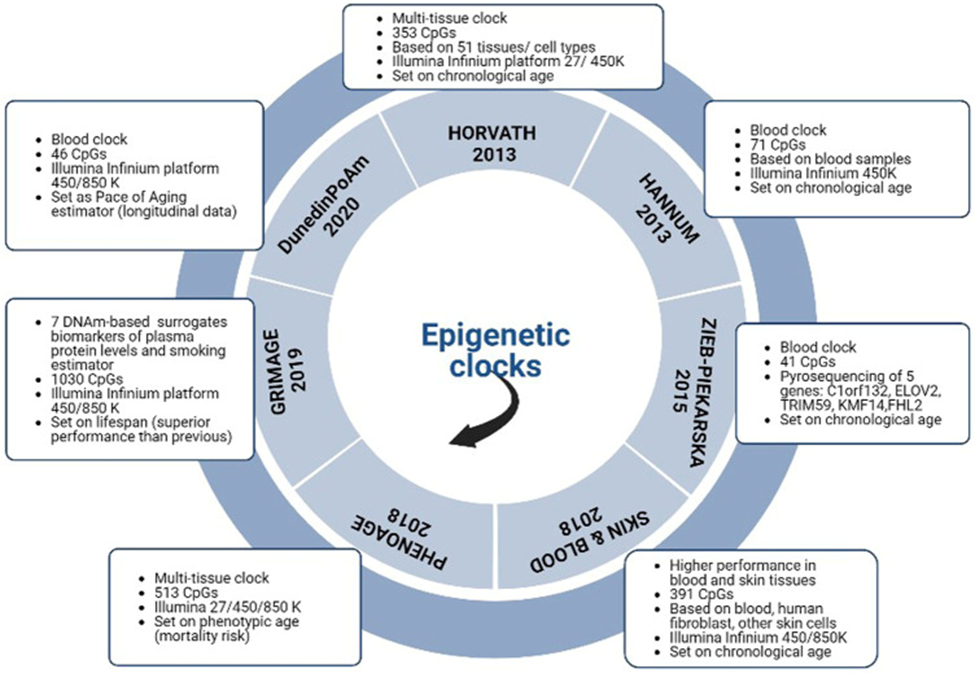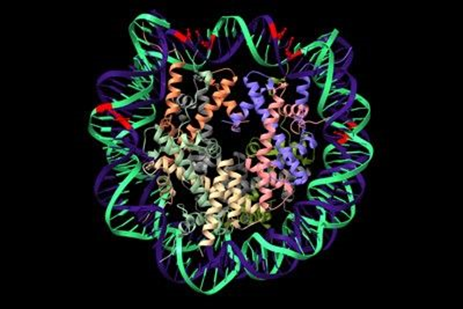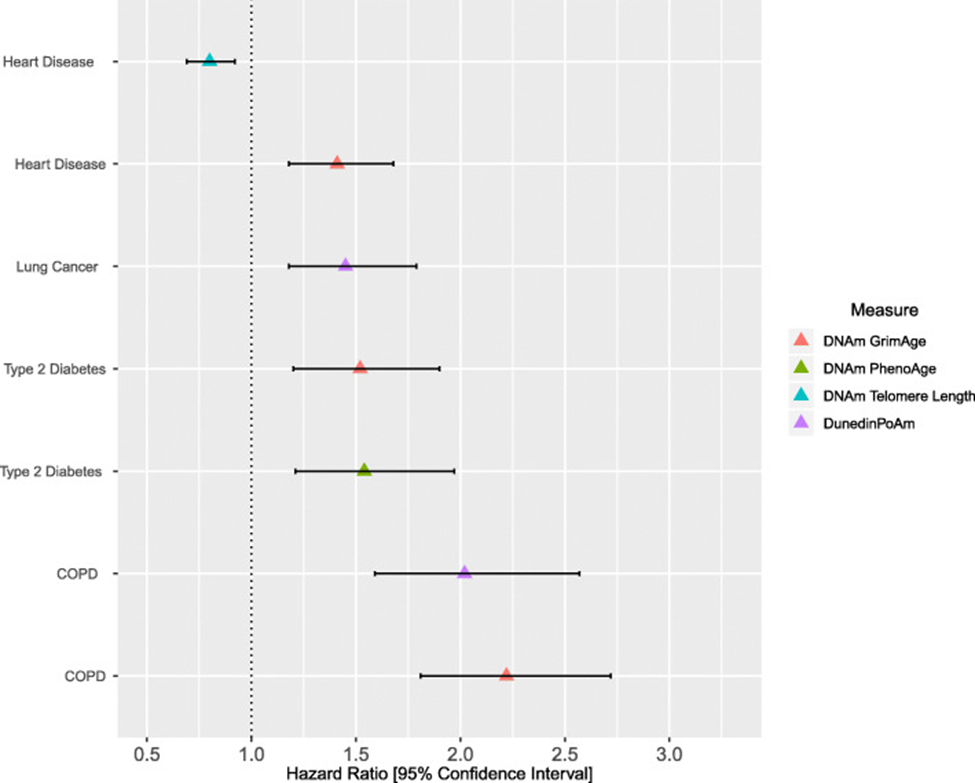Welcome to part 2 of the ODX series on "Biological Age: A True Measure of Health." In the second post in our series, we will provide an overview of the various methods of measuring biological age.
The changes associated with “aging” begin at the molecular level and eventually manifest as chronic disease, functional decline, wrinkled skin, muscle loss, compromised athletic ability, and biomarker changes reflected in blood work. Early approaches called “epigenetic clocks” were used to measure biological age based on DNA methylation patterns or “age predictors” and included the Hannum Clock and the Horvath Clock (Levine 2023).
Description of the characteristics of the most common epigenetic clocks.

Source: Li Piani, Letizia et al. “Epigenetic clocks and female fertility timeline: A new approach to an old issue?.” Frontiers in cell and developmental biology vol. 11 1121231. 21 Mar. 2023, doi:10.3389/fcell.2023.1121231 This is an open-access article distributed under the terms of the Creative Commons Attribution License (CC BY).

Epigenetics refers to how lifestyle behaviors and environmental factors can influence how genes are expressed. Epigenetic changes occur on a regular basis and help regulate the lifecycle and renewal of cells. Diet, sleep, exercise, smoking, alcohol consumption, drugs, toxins, stress, and trauma promote epigenetic changes that can be beneficial or detrimental, depending on lifestyle choices, toxin exposure, and even social factors. Healthy choices and circumstances can promote beneficial epigenetic changes and likely expand one’s healthspan, i.e., the amount of time associated with good health. DNA methylation (DNAm) and certain blood biomarkers can provide insight into health at the cellular level and help determine an individual’s internal biological age (NIH NIA 2021).

The associations between epigenetic measures of aging and incidence of common disease states

Age-adjusted DNAm GrimAge was associated with the incidence of COPD, type 2 diabetes and ischemic heart disease after 13 years of follow-up. Age-adjusted DNAm PhenoAge associated with the incidence of type 2 diabetes. Age-adjusted measures of DNAm Telomere Length associated with the incidence of ischemic heart disease. Higher DunedinPoAm values, indicating a faster pace of ageing, were associated with the incidence of COPD and lung cancer. Associations represent a one standard deviation increase in the respective epigenetic measure of ageing. Models were adjusted for age, sex, alcohol consumption, body mass index, deprivation, education and smoking. COPD (chronic obstructive pulmonary disease)
Source: Hillary, Robert F et al. “Epigenetic measures of ageing predict the prevalence and incidence of leading causes of death and disease burden.” Clinical epigenetics vol. 12,1 115. 31 Jul. 2020, doi:10.1186/s13148-020-00905-6 This article is licensed under a Creative Commons Attribution 4.0 International License
The main approaches to calculating biological age that we will cover include
Note: The most straightforward and practical approach to calculating biological age is the nine key biomarker pattern based on albumin, alkaline phosphatase, creatinine, C-reactive protein, fasting glucose, lymphocyte %, MCV, RDW, and white blood cell count.
Levine, Morgan E et al. “An epigenetic biomarker of aging for lifespan and healthspan.” Aging vol. 10,4 (2018): 573-591. doi:10.18632/aging.101414 This is an open-access article distributed under the terms of the Creative Commons Attribution (CC BY) 3.0 License.
Levine, Morgan. True Age: Cutting-edge Research to Help Turn Back the Clock. Penguin, 2023.
Li Piani, Letizia et al. “Epigenetic clocks and female fertility timeline: A new approach to an old issue?.” Frontiers in cell and developmental biology vol. 11 1121231. 21 Mar. 2023, doi:10.3389/fcell.2023.1121231
National Institutes of Health. National Institute on Aging. The epigenetics of aging: What the body’s hands of time tell us. March 26, 2021. https://www.nia.nih.gov/news/epigenetics-aging-what-bodys-hands-time-tell-us